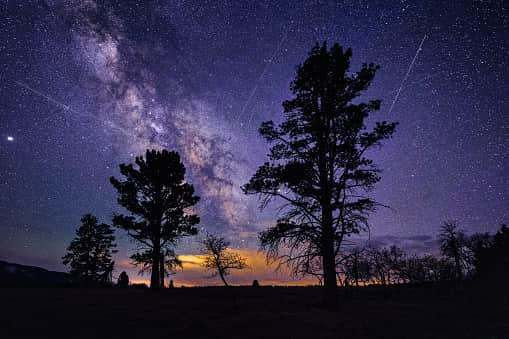Lyrid meteor shower 2023: How to see shooting stars in Glasgow, when do they peak & best time to see them
and live on Freeview channel 276
The annual Lyrid meteor shower will dazzle stargazers across Glasgow soon. The famous event is set to sparkle across the night skies in the coming weeks.
Stargazers have been searching the skies for this specific meteor shower for hundreds of years with the spectacle reportedly first being observed in ancient China in 687 BC. It is one of the oldest known meteor showers in existence. The bright display of meteors occurs when the Lyrids pass through the trail of debris left by the Thatcher Comet.
Advertisement
Hide AdAdvertisement
Hide AdThe Lyrid Meteor shower is also famous among amateur and professional stagazers alike as it is one of the most unpredictable showers and is known for surges that can see higher rates of meteors per hour than usual. Meaning the odds of catching a glimpse are higher.
So, will the Lyrid Meteor Shower be visible from Glasgow and how can you see it? Here’s everything you need to know including top stargazing tips.
When is the Lyrid meteor shower 2023?
This year, the Lyrid meteor shower will begin on April 14 and it is expected to end on April 30. The shower will be at its peak between April 22 and April 23 as the display is at its brightest with 18 meteors per hour.
Best time to watch the Lyrid meteor shower
According to the Greenwich Royal Observatory, the best time to see the meteor shower in the UK is during the early morning of the two peak days. The Royal Observatory also recommends that stargazers should wait until after midnight for best visibility, as the radiant point in the constellation of Lyra will have risen in the east, offering a better view of the horizon.
Advertisement
Hide AdAdvertisement
Hide AdTop Stargazing Tips
Stargazing is easy, you just go outside and look up at the night sky, however, there is much more to it than seeing the moon, stars and meteors sparkle above us.
The best tip is finding a dark-sky site, and making sure to check the weather forecast before going. Light pollution can often affect how much of the night sky occurrences we see, even more so the weather conditions can be cloudy which again would make it hard to see the stars.


Find a clear spot where you can see as close to the horizon as possible is a good starting point for finding a spot that will give you the best opportunity to see the sky if you are unable to get to a dark-sky site.
Stargazing is a really popular hobby for amateurs and professionals so it’s likely that there is a club near you, or that your friends have a similar interest. Finding a buddy or club to join on the cold dark nights is always helpful, and one of the best ways to stay safe when stargazing.
Advertisement
Hide AdAdvertisement
Hide AdEarthSky advises beginners not to invest in a telescope straight away, they are a big investment so start with binoculars if you are wanting to get a closer look. It’s worth noting that it’s possible to see many of the night sky events with just your eyes in the right conditions.
Comment Guidelines
National World encourages reader discussion on our stories. User feedback, insights and back-and-forth exchanges add a rich layer of context to reporting. Please review our Community Guidelines before commenting.
